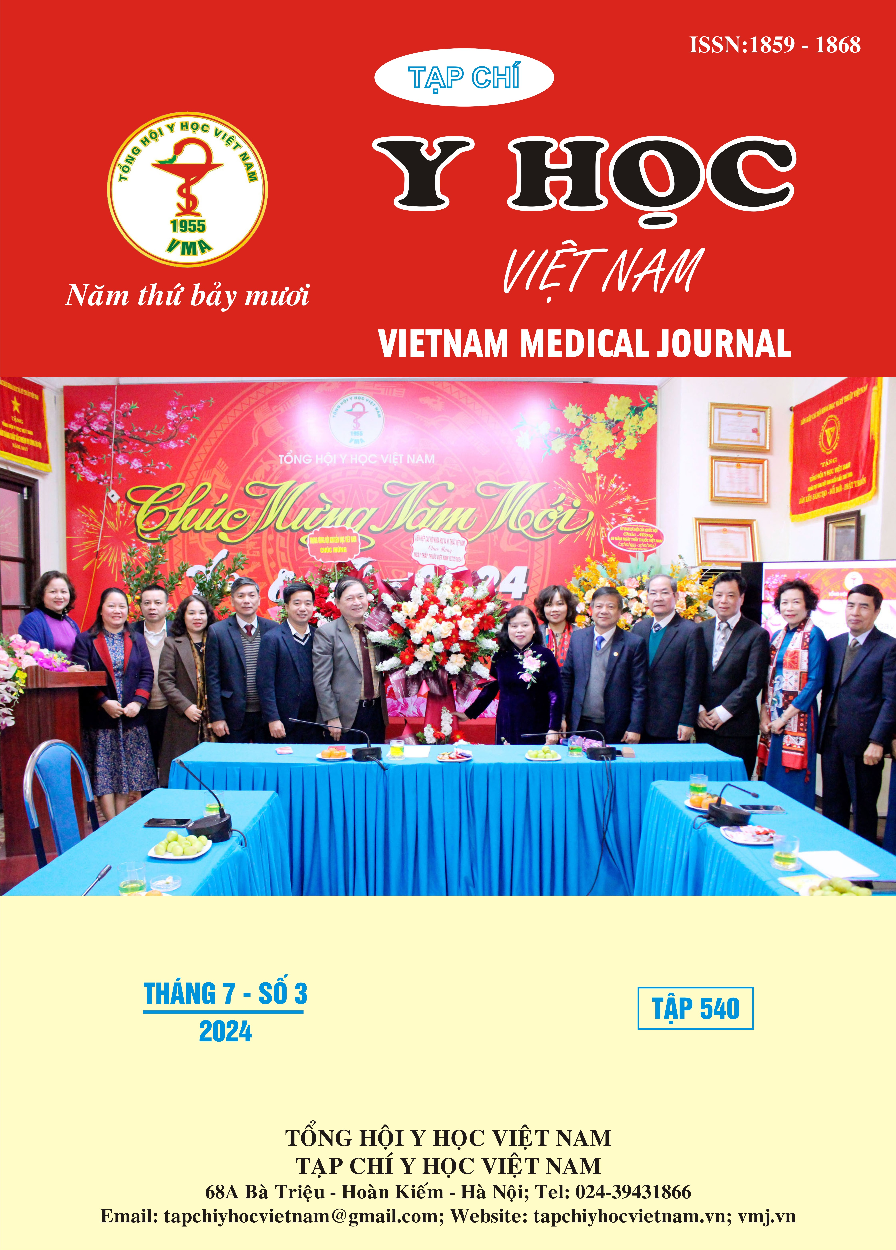EFFECT OF VIDEOLARYNGOSCOPY ON FIRST ATTEMP SUCCESS AND UPPER AIRWAY TRAUMA IN PATIENTS WITH PREDICTED DIFFICULT INTUBATION
Main Article Content
Abstract
Background: Difficult intubation is always a challenge for anesthesiologists. The study aimed to compare the rates of successful first attempts and upper airway injury when using videolaryngoscope versus direct laryngoscope in patients with predicted difficult intubation. Subjects and methods: a randomized controlled study conducted at Bach Mai Hospital on 104 patients undergoing intubation anesthesia with factors predicting difficult intubation. We randomly divided the patients into two groups: M (n = 52, using a Macintosh direct laryngoscope) and VL (n = 52, using a videolaryngoscope). The main endpoints were the rate of successful first attempts and upper airway injuries. Results: There were no differences between the two groups in anthropometric characteristics or the distribution of factors associated with difficult intubation. The rate of successful first attempts in group VL was 100%, and in group M it was 57.7% (p<0.05). The rate of sore throat at the 6th hour after extubation and bleeding of the lips/tongue, and oropharynx in the VL group was significantly lower than the group M, with the corresponding rates being: 15.6% and 6.9%; 7.8% and 0%; 38.9% and 27.6%, respectively (p<0.05). Conclusion: As compared with a direct laryngoscope, using a videolaryngoscope increases the rate of successful first intubation attempts and reduces bleeding complications and sore throats in patients with predicted difficult intubation.
Article Details
Keywords
videolaryngoscope, predicted difficult intubation, successful first attempts, pharyngeal, and dental trauma.
References
2. Hews, D.J., D.K. El-Boghdadly, and D.I. Ahmad, Difficult airway management for the anaesthetist. 2019. 80(8): p. 432-440.
3. Joffe, A.M., et al., Management of Difficult Tracheal Intubation: A Closed Claims Analysis. Anesthesiology, 2019. 131(4): p. 818-829.
4. Saul, S.A., P.A. Ward, and A.F. McNarry, Airway Management: The Current Role of Videolaryngoscopy. J Pers Med, 2023. 13(9).
5. Asai, T. and N. Jagannathan, Videolaryngoscopy Is Extremely Valuable, But Should It Be the Standard for Tracheal Intubation? Anesth Analg, 2023. 136(4): p. 679-682.
6. Lewis, S.R., et al., Videolaryngoscopy versus direct laryngoscopy for adult patients requiring tracheal intubation. Cochrane Database Syst Rev, 2016. 11(11): p. Cd011136.
7. Pieters, B.M.A., et al., Videolaryngoscopy vs. direct laryngoscopy use by experienced anaesthetists in patients with known difficult airways: a systematic review and meta-analysis. Anaesthesia, 2017. 72(12): p. 1532-1541.
8. Xue, F.-S., et al., Current Evidences for the Use of UEscope in Airway Management. 2017. 130(15): p. 1867-1875.
9. Zeng Q, et al., Comparative study of HC videolaryngoscope and disposable conventional laryngoscope for tracheal intubation (in Chinese). Clin J Med Off 2014. 42: p. 860-2.
10. Liu XC, et al., Application of UE videolaryngoscopy in patients with an abnormal airway anatomy and undergoing cerebral aneurysm embolization (in Chinese). Chin J Clin Anat, 2015(33): p. 479-81.


